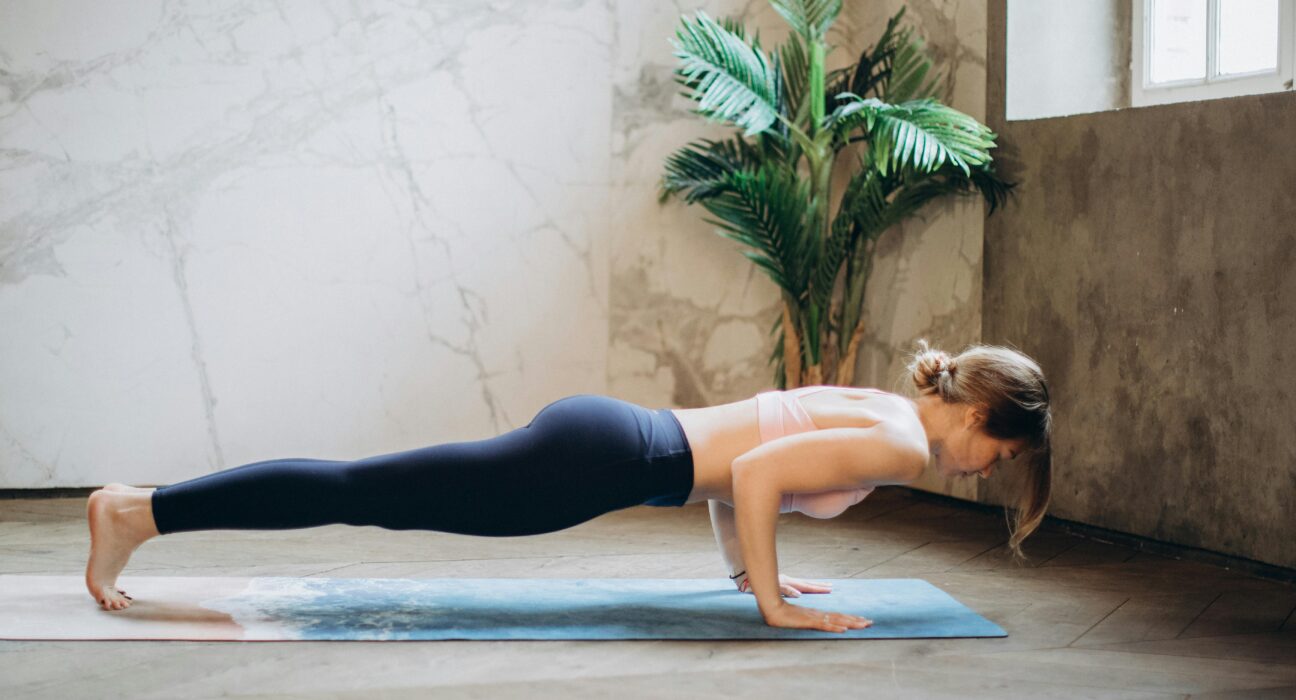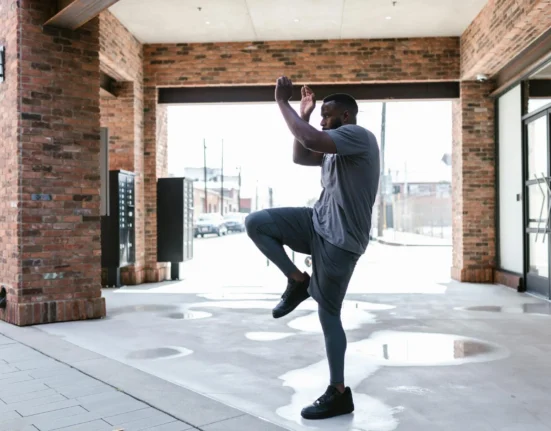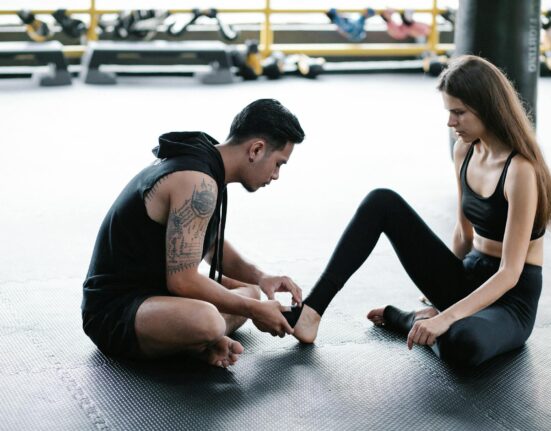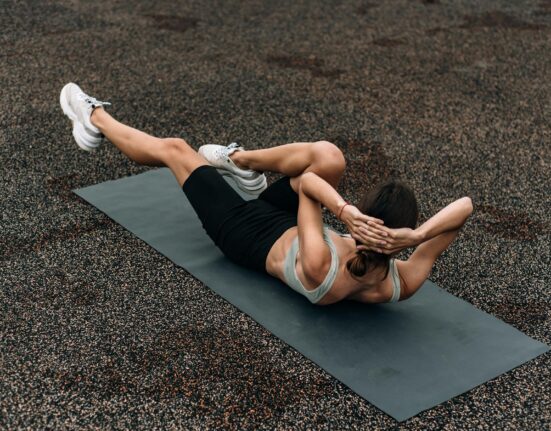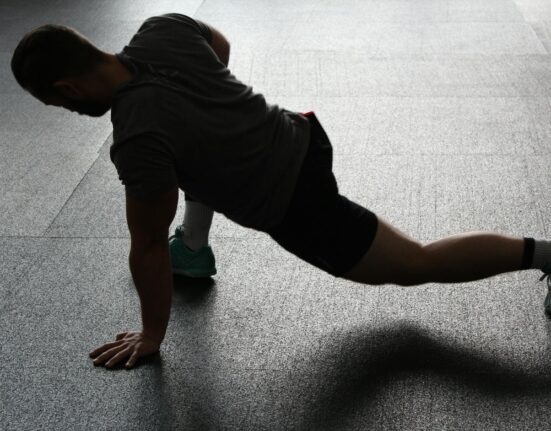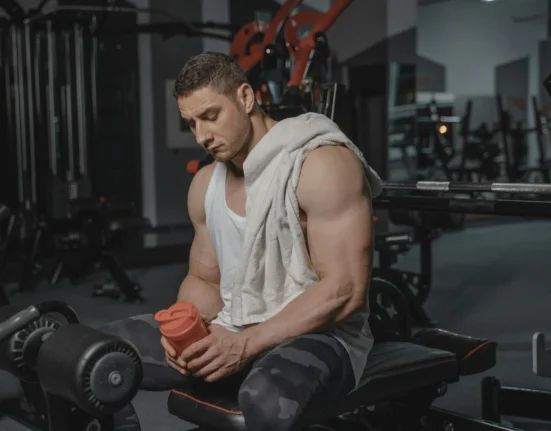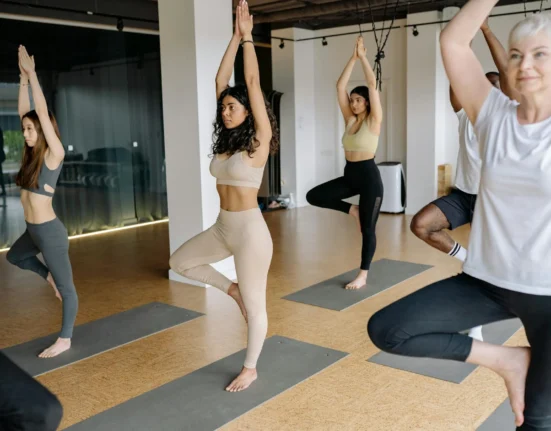Life gets busy, and finding time to work out can feel impossible. But staying active doesn’t have to mean hours in the gym. Even 15 minutes can make a big difference in building strength, boosting energy, and improving your mood. Quick, effective workouts let you prioritize fitness without overhauling your schedule. Ready to see what just a quarter of an hour can do for you? Let’s get moving!
Why Short Workouts Work
Modern life can feel like a juggling act—work, family, and personal goals all competing for your time. But fitness doesn’t have to be sacrificed. Short, intense workouts pack a punch, offering measurable health benefits in a fraction of the time. Let’s uncover why these bite-sized workouts are so effective and why they might be exactly what you need.
They Maximize Time With High Efficiency
You don’t need hours at the gym when you use your time wisely. Short workouts, especially ones that incorporate high-intensity interval training (HIIT), can deliver results in as little as 15-20 minutes. HIIT alternates bursts of effort with brief rest periods, pumping up your heart rate while engaging multiple muscle groups.
For busy individuals, this is a game-changer. Research shows that HIIT not only burns substantial calories but also improves your metabolism, keeping it elevated for hours after your workout. This phenomenon, known as the afterburn effect, proves you can work smarter—not longer.
Further reading: Check out the benefits of HIIT workouts for a deeper dive into why they’re so effective.

Photo by Ketut Subiyanto
Science Supports Their Effectiveness
Shorter sessions, when paired with intensity, are proven to improve cardiovascular health, endurance, and overall strength. Studies published in medical journals show that as little as 10-15 minutes of active effort can provide similar results to longer, less intense sessions. It’s about quality, not quantity.
For example, a Harvard article explains how interval training makes your body more efficient at using oxygen while strengthening your heart—key factors in maintaining long-term health.
They Fit Your Schedule
Let’s face it: sometimes, hours of free time just don’t exist. With short workouts, there’s no need to block out an afternoon. Whether it’s a quick session before work, during a child’s nap, or squeezed between meetings, short workouts make fitness accessible. This adaptability helps you build a routine you can sustain.
In reality, fitness is about consistency. A series of 15-minute workouts throughout your week can easily add up to meaningful progress without disrupting your lifestyle.
Explore more: Short bursts of activity have major health benefits that fit even the tightest schedules.
Strength and Endurance, No Gym Required
Intensity means you can achieve great results at home or in limited spaces. Bodyweight exercises like pushups, squats, and burpees can do wonders in a short time. Incorporating a resistance band or set of dumbbells takes it to another level. Your workout could literally fit in your living room.
This also makes fitness more inclusive. By skipping the complicated or time-consuming routines, you’re left with simple, effective options that work anywhere.
Busting the Myth: More Time Doesn’t Mean Better Results
The idea that spending hours in the gym is necessary for fitness success is outdated. Studies repeatedly highlight the efficiency of shorter, well-structured workouts. In fact, longer sessions can sometimes lead to burnout or injuries if not managed carefully. Research on shorter, intense workouts backs up their powerful results, especially in improving overall health and managing conditions like anxiety.
Short workouts embrace a “less is more” mentality. By focusing on smart, intentional movement, you can achieve impressive results without compromising your free time or energy reserves.
Tips to Maximize 15-Minute Workouts
Even with just 15 minutes, you have the power to make every second count. The trick lies in preparation, technique, and smart choices that ensure you’re getting the maximum benefit in minimal time. These tips will help you kickstart your quick workouts and take them to the next level.
Start with Dynamic Warm-ups
Jumping into a workout without warming up is like revving a car engine that’s been idle for too long. A dynamic warm-up sets the stage, getting your muscles loose and your heart pumping.
Some great options include:
- Jumping jacks: A fun way to activate your whole body, from calves to shoulders. Do them for 30 seconds to feel the burn in no time.
- Arm circles: Small and large circles help loosen your shoulders and improve range of motion.
- Leg swings: Kick your legs back and forth to loosen up hip flexors and hamstrings.
- High knees: Alternate lifting your knees toward your chest in a fast, rhythmic movement to prep your lower body.
Taking two to three minutes to warm up can significantly reduce your risk of injury and get your blood flowing for peak performance. Not sure about the importance of a warm-up? Here’s a deep dive into why warming up matters for better performance and injury prevention.
Focus on Form
Rushing through a workout to save time can lead to sloppy movements and even injuries. Proper technique is your best friend, ensuring that every rep counts and minimizes strain on your joints.
For example:
- When doing squats, keep your chest up and knees in line with your toes to engage the right muscles.
- If performing push-ups, engage your core and keep your body in a straight line from head to toe for maximum efficiency.
Good form isn’t just about avoiding injury—it ensures that the effort you’re putting in translates to results. If you’re new to a workout, consider taking a few moments to master each movement before picking up speed.
Utilize Compound Movements
When time is short, focus on compound exercises that work multiple muscle groups at once. These power-packed movements make your 15 minutes go a long way, combining cardio with strength.
Here are a few go-to compound moves:
- Squats: Targets quads, glutes, and hamstrings while also engaging your core.
- Push-ups: Works your chest, shoulders, triceps, and core muscles.
- Burpees: Combines strength and cardio, working nearly every muscle in the body.
- Deadlifts: Great for your back, legs, and grip.
Implementing these exercises strategically in your workout empowers your body to burn more calories and build muscle faster than isolated movements. Interested in learning more about optimizing quick routines? Check out some 15-minute workout ideas to explore.
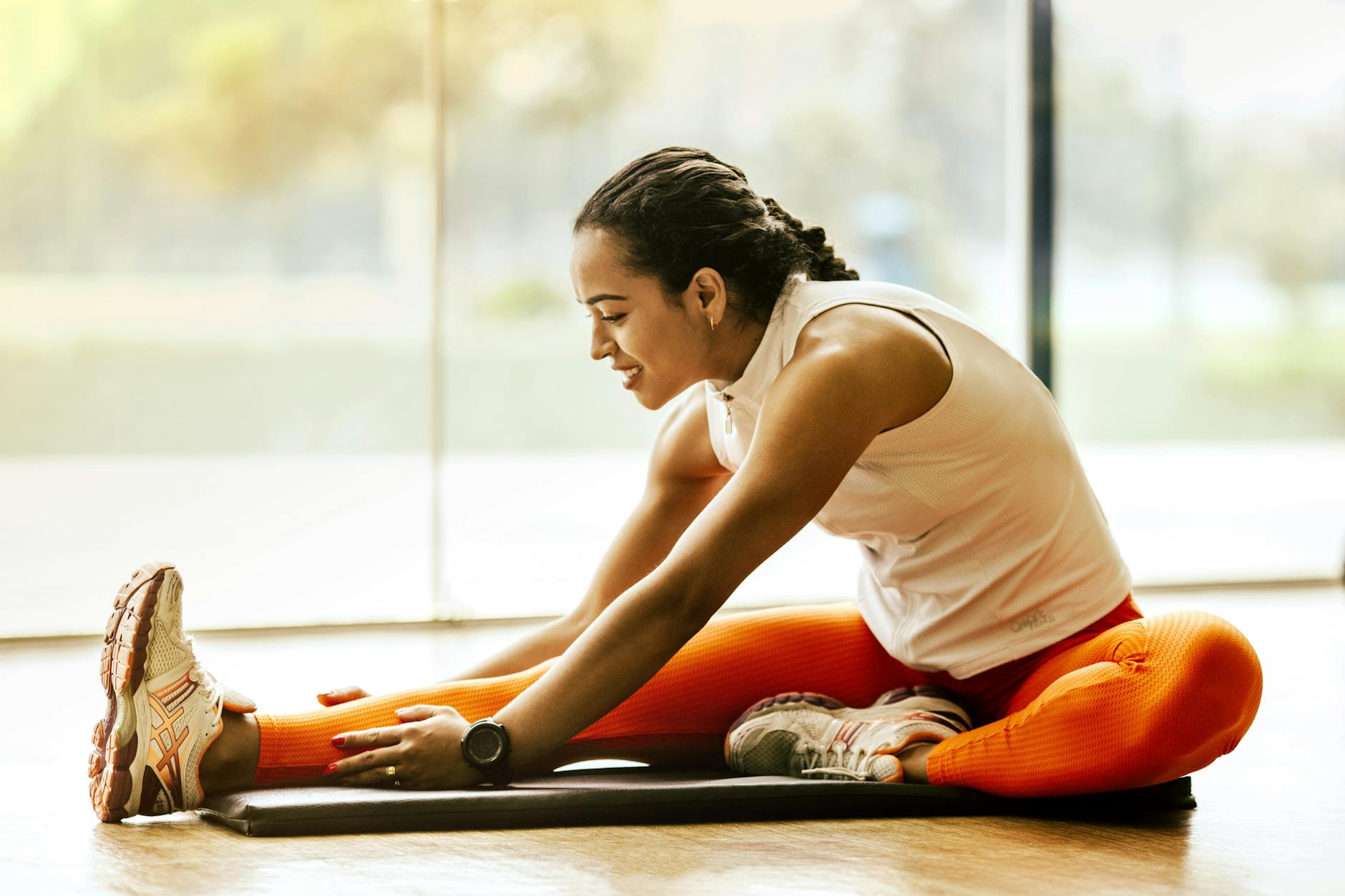
Photo by Jonathan Borba
Add Intensity with Intervals
Don’t let the clock fool you—adding variety and intensity through intervals can transform your workout from mediocre to mighty. High-intensity interval training (HIIT) is a proven method to maximize calorie burn and boost metabolism in short amounts of time.
Here’s how it works:
- Sprint or perform a high-intensity exercise (like burpees or mountain climbers) for 30 seconds.
- Follow it with 30 seconds of rest or a low-intensity movement (like walking or toe taps).
- Repeat this circuit for the duration of your 15 minutes.
This “work-rest” approach pushes your body hard, then lets it recover briefly before repeating. The result? A workout that strengthens your heart, builds endurance, and burns fat efficiently.
Ready to get started? Here’s how interval training can redefine your workouts by making them more dynamic and effective.
By tweaking these aspects of your workout, you can turn even the shortest routine into a rewarding, result-driven session. Remember, focus beats duration every time!
Cardio-Focused 15-Minute Workouts
You don’t need an hour to get your heart pumping and your body moving. Cardio-focused workouts are some of the most efficient ways to boost heart health, burn calories, and improve endurance—all within 15 minutes. Here are three ideas that pack maximum benefit into minimal time.
High-Intensity Interval Training (HIIT) Routine

Photo by bamboo ave.
If you want to maximize calorie burn and boost your cardio in record time, HIIT is the way to go. This type of workout alternates between bursts of intense exercise and brief recovery periods, keeping your heart pumping and your muscles engaged.
Here’s a simple 15-minute HIIT structure to try:
- Perform 30 seconds of burpees, giving it your all.
- Rest for 15 seconds.
- Repeat this sequence 5 times.
Then for variety:
- Do 30 seconds of jump squats.
- Rest for another 15 seconds.
- Repeat for 5 rounds.
The mix of dynamic exercise and rest ramps up your metabolism, keeping it elevated long after your workout is done. For a detailed guide to creating more custom HIIT plans, check out this HIIT Workout Programming Guide.
Shadowboxing Session
Shadowboxing isn’t just for fighters—it’s a full-body workout that strengthens your heart, improves coordination, and relieves stress. Best of all, you don’t need any equipment or a lot of space to get started.
To begin, set a timer for 15 minutes and cycle through these movements:
- 1 minute of punching combinations (e.g., jab, cross, hook, uppercut).
- 30 seconds of footwork practice, like side-to-side stepping or pivoting.
- 30 seconds of rest.
Repeat the sequence until your timer runs out. This quick session improves reaction time while engaging your core and arms. Bonus? The mental focus it requires is an excellent stress reliever. Get started with tips from this guide on shadowboxing benefits.
Jump Rope Circuit
Jumping rope isn’t just for kids—it’s one of the most effective cardio tools out there. It’s portable, affordable, and delivers an intense workout that improves both cardiovascular health and coordination.
Here’s a quick 15-minute jump rope routine to try:
- 2 minutes of basic skipping at a steady pace.
- 1 minute of high knees with the rope, driving your knees up toward your chest.
- 30 seconds rest.
Repeat this circuit three times for an energizing, sweat-inducing workout. By mixing steady pacing and quick bursts of energy, you build endurance and torch calories. Need more insight into how jumping rope benefits your fitness? Explore this jump rope workout breakdown.
These 15-minute cardio workouts prove there’s no excuse for skipping activity, even on your busiest days. Whether you’re blasting through a HIIT session, throwing a few punches, or jumping to your heart’s content, you can prioritize your fitness without sacrificing too much time. Ready to choose your favorite? Let’s keep moving!
Strength-based 15-Minute Workouts
Got 15 minutes? That’s all you need to start building strength and improving your overall fitness. With the right exercises and techniques, short strength-focused sessions can deliver powerful results for your body. Best of all, these workouts require minimal equipment—your body and a bit of space are often enough. Ready to add some muscle to your day? Let’s break it down.
Bodyweight Blast

Photo by Scott Webb
No weights? No problem! A bodyweight workout is as convenient as it gets, requiring only your determination and some open space. This quick routine will hit key muscle groups and boost your strength—all without leaving your living room.
Here’s the plan:
- Push-ups (12-15 reps): Start with the classic push-up or modify by dropping to your knees. Ensure your hands are aligned with your chest and your core stays tight.
- Bodyweight squats (15-20 reps): Stand with feet shoulder-width apart, lower down like you’re sitting into an invisible chair, and return to standing. Engage your glutes for max power.
- Plank (hold for 30-45 seconds): Stay in a push-up position, but rest on your forearms. Feel your core fire up to stabilize you.
- Lunges (10 reps per leg): Step one leg forward and sink into a lunge, keeping your knee aligned over your ankle. Alternate sides.
Cycle through these moves three times for a sweat-soaked 15 minutes. Bodyweight routines are perfect because they can happen anywhere—your office, living room, or even a park. Looking for more ideas to personalize your workout? Check out this beginner’s bodyweight guide to get started.
Resistance Band Routine
Resistance bands might not look like much, but these unassuming stretch bands pack a serious punch. They’re easy to store and highly versatile, making them a fantastic tool for quick strength training.
Here’s a simple resistance band workout:
- Bicep curls (12-15 reps): Stand on the middle of the band with both feet, hold the ends, and curl your hands toward your shoulders.
- Lateral leg lifts (10 reps per side): Loop the band around your ankles, stand tall, and lift one leg out to the side, keeping it straight.
- Bent-over rows (12-15 reps): Stand on the band, lean forward slightly with a straight back, and pull both ends toward your torso.
- Standing triceps extensions (12 reps): Hold one end of the band behind your neck and the other overhead, extending your arms straight up.
Repeat this circuit three times to target your arms, legs, and core. Resistance bands are travel-friendly and provide adjustable levels of tension, simulating weights without the bulk. Interested? Learn more about incorporating resistance band routines with this resistance band exercise guide.
Core-focused Circuit
Your core is more than just your abs—it’s your body’s powerhouse, stabilizing everything from your posture to your movements. This 15-minute circuit zeroes in on your midsection to build strength and stability.
Try these exercises:
- Planks (hold for 30 seconds): Keep your body straight like a board, ensuring your elbows stay under your shoulders. For an extra challenge, try lifting one arm or leg.
- Mountain climbers (20 reps per knee): In a push-up position, drive your knees toward your chest alternately as if you’re sprinting in place.
- Russian twists (15 reps per side): Sit on the floor, lean back slightly, and twist your torso from side to side, touching your hands or a weight to the ground.
Complete 3-4 rounds for a killer core workout. These dynamic moves not only strengthen your abs but also improve overall balance and athletic performance. If you’re curious to spice things up, explore this core exercise guide for variations and extra tips.
These quick routines prove that strength training doesn’t require loads of time or bulky equipment. Whether you’re combining bodyweight moves, resistance bands, or targeting your core, 15 minutes is more than enough to make a difference. So, what’s stopping you? Make time for your strength today!
Stretching and Recovery-focused 15-Minute Workouts
Taking just 15 minutes for recovery can do wonders for your body. Whether it’s stretching out tight muscles, relaxing with yoga, or easing soreness with foam rolling, these routines are essential for keeping your body strong and preventing injuries. Here’s how to make the most of a quick session focused on recovery.
Full-body Stretch Routine

Photo by ROMAN ODINTSOV
Stretching is more than a post-workout add-on—it’s a way to improve flexibility, promote circulation, and reduce muscle tension. In just 15 minutes, you can target all the key areas of your body with these stretches:
- Forward Fold: Stand tall and hinge at your hips, folding forward to touch your toes (or as far as you can reach). This stretch relaxes your hamstrings and lower back. Hold for 30 seconds.
- Hip Openers: Step into a lunge position. Lower your back knee, pressing your hips forward. Stay tall through your torso and feel the stretch through your hips. Switch sides and hold for about 30 seconds per leg.
- Chest Stretch: Stand in a doorway with your arms at 90-degree angles, pressing your forearms against the frame. Gently lean forward to open your chest and shoulders. Hold here for 20-30 seconds.
These movements create balance and ease tension throughout the body. Want to understand why flexibility matters? Check out the importance of stretching and recovery in fitness.
Gentle Yoga Flow
Yoga isn’t only for relaxation—it’s also a great tool for recovery. A short, gentle session can release mental stress while loosening up tight muscles. Try this simple sequence:
- Child’s Pose: Begin on your hands and knees, then lower your hips toward your heels while reaching your arms forward. This position opens up your lower back and hips.
- Cat-Cow Stretch: From all fours, alternate between arching your back (cow) and rounding it upward (cat). This dynamic movement releases tension along your spine.
- Downward Dog: Push up into an inverted V shape, spreading your fingers wide and pressing your heels toward the ground. This stretch targets your hamstrings, calves, and shoulders.
Flow through these poses 2-3 times. The gentle activation and release of your muscles also calm your mind. Explore more about the soothing effects with yoga’s benefits for relaxation and recovery.
Foam Rolling Session
Foam rolling targets knots and tight areas, easing soreness and improving circulation. This self-myofascial release technique is a lifesaver for post-workout recovery. Spend 15 minutes rolling out these key areas:
- Quads: Lay face down with the foam roller under your thighs. Slowly roll from your hips to just above your knees, pausing on tight spots.
- Back: Lie on your back with the roller under your shoulder blades. Glide the roller up and down your upper back, keeping your movements controlled.
- Calves: Sit with your legs extended and place the roller under one calf. Roll gently from your ankle to the back of your knee, then switch legs.
Aim for 30 seconds to 1 minute per muscle group. Foam rolling can feel intense, but it’s worth it for the relief. For tips on technique, learn about foam rolling benefits for muscle recovery.
Incorporating these recovery-focused exercises into your routine can make a big difference in how strong and refreshed you feel.
Conclusion
Fitness doesn’t have to be complicated or time-consuming. With just 15 minutes, you can jumpstart your health, build strength, and boost energy. Small, consistent efforts add up, proving that anyone can make time for movement.
Pick one quick workout from this list and give it a try today. Whether it’s a burst of cardio, a strength circuit, or a recovery session, commit to those 15 minutes—you deserve it.
There’s no perfect moment to start, only the choice to make your health a priority now. Let those 15 minutes be your stepping stone to a stronger, healthier you.


